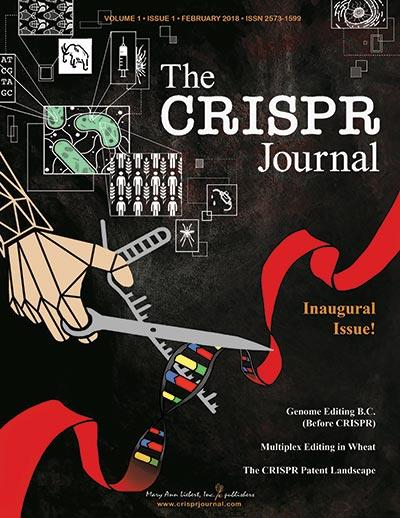Inaugural Issue of the CRISPR Journal Features Study About Batten Disease
Written by |

The CRISPR Journal is an international, multidisciplinary peer-reviewed journal publishing outstanding research on the myriad applications and underlying technology of CRISPR. Credit: Mary Ann Liebert Inc., publishers
The inaugural issue of the the CRISPR Journal published an article focusing on the potentials of CRISPR gene therapy in Batten disease.
In the study “CRISPR-Cas9-Mediated Correction of the 1.02 kb Common Deletion in CLN3 in Induced Pluripotent Stem Cells from Patients with Batten Disease,” researchers from the Stephen A. Wynn Institute for Vision Research, at the University of Iowa, reported the successful use of CRISPR-Cas9 homology-dependent repair of the most common CLN3 gene mutation in induced pluripotent stem cells (iPSCs ) from two Batten patients.
This type of stem cell can be generated directly from adult cells and can give rise to almost any cell type in the body, such as nerve, heart or liver cells.
These CRISPR-corrected cell lines represent a significant “step towards treatment of the vision loss and thus extension of quality of life in individuals with Batten disease,” the co-authors said in a press release.
CRISPR (clustered regularly-interspaced short palindromic repeats) technology is the latest of a series of robust genome-editing technologies. It allows scientists to edit genomes with unprecedented precision, efficiency and flexibility.
CRISPR is a family of DNA sequences in bacteria that contain snippets of DNA from viruses that have attacked the bacterium. These snippets are used by the bacterium to detect and destroy DNA from similar viruses during subsequent attacks.
A set of genes was found to be associated with CRISPR repeats and was named “cas” (or CRISPR-associated genes). The cas genes encode special enzymes that can cut or unwind DNA and are always located near the CRISPR sequences.
CRISPR technology has considerable potential applications, including altering the germline of humans, animals and other organisms. By delivering the Cas9 protein and appropriate ribonucleic acids (RNAs) into a cell, the organism’s genome can be cut at any desired location, like a tailor-made genetic modification.
In this recently published study, researchers used a CRIPSR-Cas9 repair approach to correct the CLN3 mutation in iPSCs from two Batten patients. In both cases, they were able to successfully correct and restore the CLN3 transcript.
The study paves the way for future research aiming to compare affected and CRISPR-corrected iPSCs to learn more about how mutations in CLN3 cause retinal degeneration, epilepsy, cognitive decline leading to premature death — symptoms associated with Batten disease
There is no cure or approved treatments for Batten disease. The creation of CRISPR-corrected patient iPSCs may provide genetically matched cell lines that could be differentiated into neuronal cells and compared side-by-side with affected (uncorrected) cells for disease modeling or drug selection.




